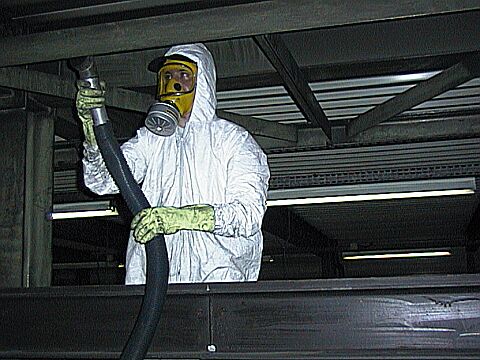Handling contaminated fire residues
The danger lurking in burnt-out ruins
In the course of a fire, everyday, harmless materials can generate a multitude of highly toxic, complex combustion products and residues. How these harmful compounds are identified and what is the best way of renovating fire-damaged buildings was the subject of discussion among about 100 experts on June 24th at the EMPA Academy.

|
Although the frequency of fires with critical, environmentally threatening consequences has reduced over the past few years, when such incidents do occur they present very serious challenges to the insurers, experts and service personnel involved in the subsequent damage management. The renovation of affected structures must also be a sustainable process and not expose building workers to hidden health risks. While legal and financial coverage of fire damage is well established in Switzerland, discussion forums on coping with operative damage are, in contrast, rather thin on the ground. As a first step in rectifying this situation the symposium on "Handling contaminated fire residues" was organized at the EMPA Academy.
The first step: identifying harmful residues The specialists who inspect damaged premises after the fire has been extinguished must rapidly decide whether the building can be given the all-clear, or whether it must be decontaminated and cleaned by expert personnel in full protective clothing. This decision is based on the results of chemical analyses of residues, which can only be performed by specialized laboratories including those at the EMPA. In this context the techniques used to gather samples at the seat of the fire are critical. If only air samples are taken, for example, then those toxic pollutants which normally gather in the ash on the floor will be overlooked. Only by very detailed, careful analytical procedures can concentrations of problematic compounds such as dioxins, PAHs (polycyclic aromatic hydrocarbons) and heavy metals (e.g. mercury, cadmium etc.) be quantified. One important aim of the symposium was to provide a platform for the exchange of knowledge and experience between underwriters and representatives of the fire damage clearance service sector.
A multi-faceted subject For more than 20 years the EMPA, and also the Allianz Center of Technology (AZT) in Ismaning, Germany, have been dealing with the problems of the consequential damage from fires. The speaker from the AZT described the kind of difficult-to-handle contaminants which are to be expected when certain materials undergo combustion. EMPA’s representative provided details of the analytical techniques applied. Participants confirmed his view that the central role of the analytical process was the assessment of toxicity and evaluation of the danger level. To demonstrate the logistical challenge presented by the post-fire renovation of a building, CERN was chosen as an example by speakers from Belfor (Suisse) AG and the EMPA, who were involved in the case. The fire, which occurred several years ago in the largest particle accelerator in the world, made 1500 physicists unemployed for about three months. Speakers from the practical side of the insurance sector discussed the role of the insurance companies in risk management, where experience gathered from damage repair is actually accumulated. The audience also heard the viewpoint of a Damage Assessment Inspector, who always found himself between the front lines, so to say. The speaker from Belfor International GmbH raised several critical questions. Instead of searching primarily for dioxin ("Do you know of any fatalities caused by dioxin?"), should we not be looking for other dangerous substances like PAHs? After all, these toxins are widely distributed and routinely encountered in daily life – in tobacco smoke, in diesel exhaust fumes, and even in barbecue smoke. The speaker also expressed the view that it would be sensible to establish a national fire-damage assessment team, which would be equipped and trained to handle particularly large or dangerous fires. These and other questions were the subject of animated discussion in the question and answer session after the presentations. One concrete demand, amongst others, was for a research program to investigate the sustainability of renovation work. Quite frequently, for example, it is the case that the electrical system in a building shows better performance after renovation. This is a measurable parameter. On the other hand, relatively little is known about the long-term behavior of renovated systems.
More technical information: René Werner, Metallic Materials laboratory, |
||
